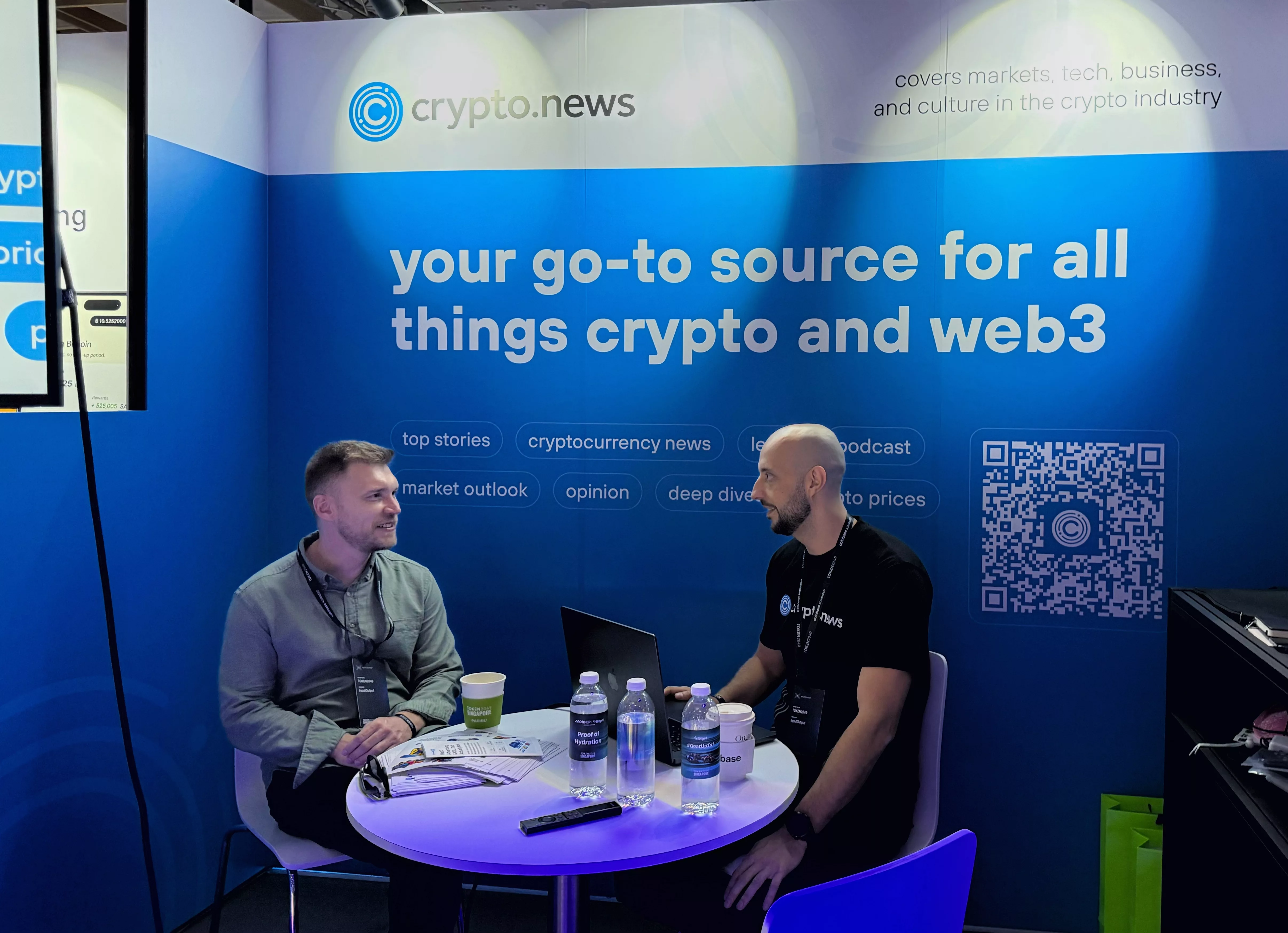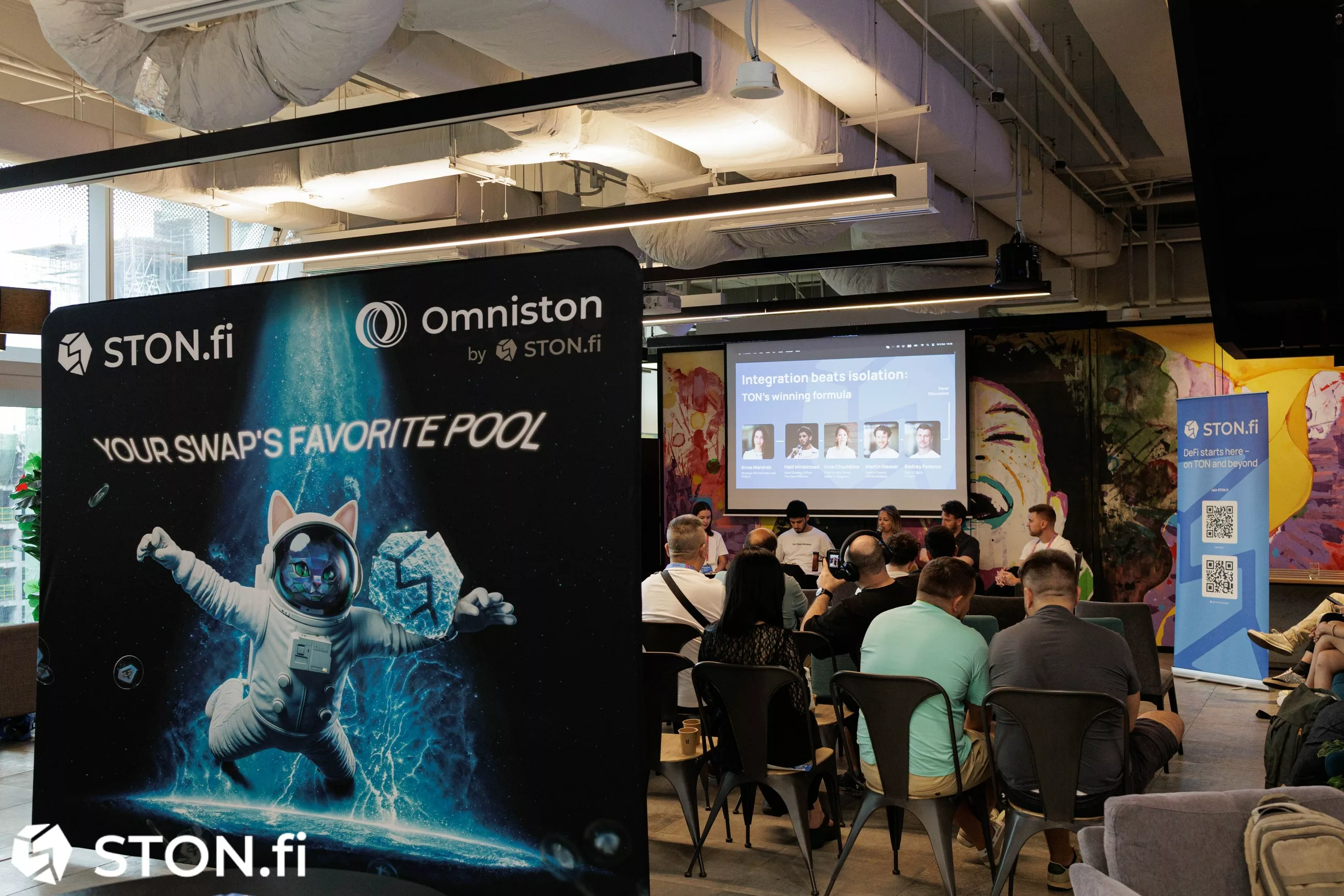Disclosure: This article does not represent investment advice. The content and materials published on this page are for educational purposes only.
At TOKEN2049 Singapore, Andrey Fedorov of STON.fi shared how swaps, liquidity aggregation, and the Omniston protocol are shaping TON into a scalable blockchain ecosystem.
summary
- STON.fi is building the infrastructure to make swaps on TON faster, fairer, and more reliable, ensuring smooth execution without users having to deal with fragmented liquidity.
- The Omniston Protocol aggregates liquidity across TON and fosters healthy competition between DEXs, while simplifying developer integration and improving user experience.
- As TON rapidly expands through the introduction of the Telegram mini-app, STON.fi is positioned to support cross-chain liquidity and initiate community-driven governance through the DAO.
At TOKEN2049 in Singapore, we sat down with Andrey Fedorov, CMO and CBDO of STON.fi Dev, to discuss the future of infrastructure on the TON blockchain. Fedorov, who has a background in building user-focused financial products and driving ecosystem growth, shared insights on swaps, liquidity aggregation, and Omniston’s role in making TON more scalable and developer-friendly. In our conversation, we explored how STON.fi is positioned at the center of TON’s rapid expansion.

- For someone who just learned about TON through Telegram, why should they care about infrastructure like swaps and liquidity aggregation? And what problems would you actually experience without it?
That’s a great question. Because for most people, infrastructure seems invisible. But here’s the problem. If you try to exchange your tokens and it takes forever, you get a bad price, or the trade fails, it’s time. Without a strong infrastructure, the experience can quickly become frustrating. What we’re building at STON.fi is an engine that prevents these problems from happening. Ideally, users would not have to think about what’s going on behind the scenes and just get smooth swaps and fair prices.
And there is another aspect that is very relevant to TON blockchain. Telegram is famous for its viral mini-apps and games where players earn tokens. The next question they ask is: “Okay, I’ve got these tokens…now what? Can I trade them, use them, bet them?” Without reliable infrastructure to move, exchange, stake, and farm these tokens, the excitement will quickly disappear. It’s not enough to just give people tokens. We need to provide them with a path into the broader ecosystem. STON.fi fills exactly that gap.
And that is also why Omniston, the liquidity aggregation protocol, is built. Users automatically get the best fills without having to think about which DEX currently has the best pool. Omniston ties everything together so people can use TON without worrying about where their liquidity is. The idea is to reduce hassle, increase reliability, and make sure that when you take your first steps to Web3 through Telegram, you can actually see how easy it is to go further without getting stuck.
- TON is expanding rapidly, but growth comes with both opportunities and unforeseen challenges. From your perspective, what are the biggest changes you’ve seen at TON over the past year? Where does STON.fi fit into that story?
The biggest change is TON’s transition from a promising company to a company undergoing extensive stress testing. A year ago, people were still wondering, “Can TON handle real traffic?” Then suddenly we had proof. During events such as large airdrops, trading volume almost tripled overnight. It was both exciting and chaotic.
For STON.fi, it was a trial by fire. Swap slowed down, queues built up, and execution became unpredictable. Swap was suspended and then rebuilt to protect users, adding distributed routers, simplifying transactions, and introducing automatic expiration. This stress test became the blueprint for a stronger system.
As a result, developers using our SDK today know they are building on an infrastructure that has already passed the most rigorous tests. Even when TON traffic spikes, users don’t have to think twice because swaps continue to run smoothly. In some ways, that disruption pushed us to build resilience faster. That’s how STON.fi fits into TON’s growth. That is, by turning moments of pressure into stronger foundations for the entire ecosystem.
- Everyone asks “TON vs Ethereum/Solana”. Better question: What does TON’s architecture do? your It makes your job easier. And where does that put you?
TON has some real strengths. First, our integration with Telegram allows projects like ours to connect directly to 1 billion users. So distribution and adoption is much faster than in most other ecosystems, people don’t have to look for you, you’re already where they are.
Second, TON’s sharding is designed with scalability in mind, which is a huge advantage in the long run. However, it also comes with challenges. Working across shards is not trivial when the load is high, so you must take this into account during development and use the system effectively. Therefore, STON.fi had to build a distributed router-like solution to maintain swap reliability.
And third, a supportive ecosystem. TON’s projects don’t just grow on their own, we think a lot about how one project can scale another. That’s why we focus on strong partnerships. Because collaboration is what really helps move the entire ecosystem forward.
- Fragmented liquidity is a major barrier for blockchain, and TON is no exception. Beyond improved execution, what deeper impact do you see Omniston having on developer adoption and ecosystem growth?
If you’re a developer and you want swap in your app, you basically have to plug in every DEX and protocol yourself, which doesn’t scale.
With Omniston, you integrate once and have instant access to all the liquidity on TON. This makes life a lot easier for developers, allowing them to focus on building functionality instead of tinkering with plumbing. That’s why more than 40 projects have already integrated our solutions.
And the ripple effects are huge: users get smoother apps, liquidity providers see more activity, and the entire ecosystem feels more connected rather than fragmented. After all, Omniston isn’t just about improving execution, it’s about helping TON grow faster and stronger together.

- Some critics may say that aggregators reduce competition between DEXs. How do you see Omniston impacting innovation within the liquidity providers themselves?
In fact, I think it encourages them to innovate even more. With Omniston, users automatically get the best rates across all pools. In other words, if you are a DEX or a professional market maker, you know that you will only get order flow if the services you offer are competitive. In other words, it levels the playing field and no one can rely solely on being the “default”. So, in my view, it creates healthy competition and motivates everyone to improve.
- Cross-chain connectivity seems like the next big milestone. How do you think TON will be reshaped as external capital flows in, and what role do you think STON.fi will play in smoothing that transition?
With the influx of external capital, TON ceases to exist in isolation and actually becomes part of the broader crypto economy. That’s when things get exciting and suddenly you have more liquidity, more trading pairs, and more opportunities for both users and builders. But of course, it also comes with complexities, such as bridging assets, routing transactions between different chains, and managing risk.
That’s exactly where STON.fi, and specifically Omniston, comes into play. The big idea behind Omniston is to become a true cross-chain solution, rather than just aggregating TON liquidity. All liquidity within TON now feels connected. Tomorrow, the same simplicity will be extended across the entire ecosystem, so moving tokens from Ethereum, Solana, or any other chain will feel as seamless as swapping within TON.
Our role is to make it all invisible. Users don’t have to worry about where their liquidity is or how many hops a transaction takes. Just one click and it works. That is Omniston’s mission: to transform cross-chain from complex to natural, and in doing so, unleash a greater wave of capital and adoption into TON.
- All large protocols eventually face governance issues. Do you see a future where the direction of STON.fi becomes more community-driven?
absolutely. Up until now, we’ve been in a “build fast and stabilize the foundation” phase, where it made sense for the core team to lead. However, in the long term, we believe that the protocol will be stronger when it is guided by the community. Community-led governance isn’t just about handing over control; it’s about building more resilience, more ideas, and more trust.
That’s why we feel the project is ready to take the next step. This year, STON.fi is introducing DAO. STON.fi has a strong and loyal community, and we want them to join us on the journey, not just as users, but as active participants in shaping the next future of STON.fi. It’s about growing together and ensuring the protocols are strengthened by the community.
read more: STON.fi launches CATI farming, Catizen soars to record
Disclosure: This content is provided by a third party. Neither crypto.news nor the author of this article endorse any products mentioned on this page. Users should conduct their own investigation before taking any action related to the Company.


